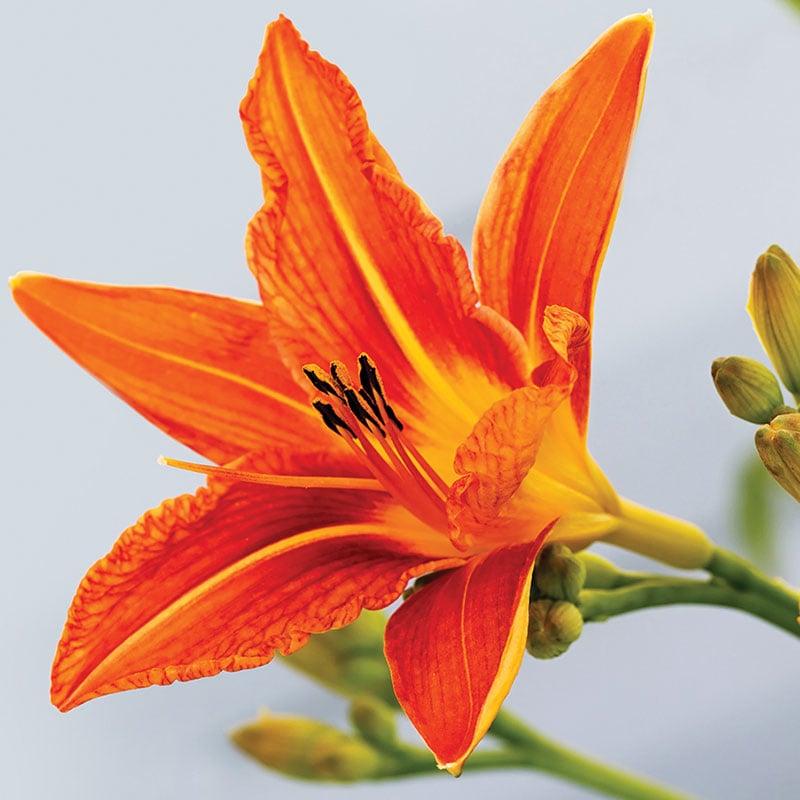Lilies and Lookalikes
‘True’ Lilies Need Time to Chill Out, But Their Close Cousins Can Thrive in Warmer Climes

Q: I like the look of lilies but I don’t know much about them. I know daylilies do well here, but are there other kinds that bloom at other times of the year?

A: The trumpet shape of lily blossoms lends a graceful elegance to a flowerbed or border, and it’s not surprising that many gardeners want them in their gardens. There are many species of the genus Lilium, and many more plants botanically unrelated that have “lily” in their common name. If you’re not too picky about the nomenclature, you can have lots of “lilies” in your yard, but most true lilies are more comfortable in cooler climates and rot in our hot, humid summers.
True lilies that can tolerate our weather include Easter lilies, Lilium longiflorum. The potted ones from the grocery store can be planted in full to part sun. Just make sure they get enough water and the soil drains well. The Formosa or Philippine lily, Lilium formosanum, is a cousin that looks similar to the Easter lily, but it’s larger. Most Oriental lilies, such as the popular Stargazer, can be planted as bulbs and will bloom beautifully at least the first year. Their ability to return and rebloom has a lot to do with whether they get the necessary “chill time” to rest. If you find the right microclimate in your yard, your lilies might flourish. If not, you can treat them as annuals and replace them every year, or dig them and store them in the refrigerator.
Or you can plant “lilies” that thrive here. While true lilies have six sepals, or petals, in their blossoms, these tough plants usually have five. The exception is the rain lily, which has six petals but is a member of the amaryllis family. Rain lilies come in white (Zephyranthes atamasca), yellow (Z. citrine) and pink (Z. grandiflora). As their name implies, they sprout after a soaking rain, and are sometimes called zephyr lilies or fairy lilies.
Speaking of amaryllis, this beauty packs a visual punch in spring with shades of red and pink, particularly when planted en masse. Those boxed Christmas gifts so readily available in garden centers can be planted in the ground after forcing and will spread quite nicely. Another “lily” in this family that spreads easily is the swamp lily (Crinum), a pass-along plant often found around old homesteads. It likes partial shade, but as I’ve said before, most things grown in the Florida Panhandle and North Florida benefit from high shade or afternoon shade. Full sun here is not the same as full sun in states farther north.
Daylilies, Hemerocallis (pictured), get enough cold weather here to satisfy their dormant stage, but they struggle farther down the Florida peninsula. They come in tall and dwarf varieties, with early to late-season blooming cycles, and in almost every color of the rainbow.
“Lilies” whose flowers don’t have the classic trumpet shape include hurricane lilies (Lycoris radiata), which spring up during fall. The open, airy shape of blossoms atop a 2-foot bare stem gives Lycoris one of its nicknames, Bare Naked Ladies. While scarlet red is the most common, golden-yellow Lycoris bulbs can sometimes be found in local nurseries.
Calla lilies (Zantedeschia aethiopica) and canna lilies (Canna x generalis), neither of them true lilies, add bold color and dramatic foliage to the landscape. Cannas, in particular, multiply well, which means free plants.
© 2015 Postscript Publishing, all rights reserved. Audrey Post is a certified Advanced Master Gardener volunteer with the University of Florida IFAS Extension in Leon County. Email her at Questions@MsGrowItAll.com or visit her website at msgrowitall.com. Ms. Grow-It-All® is a registered trademark of Postscript Publishing.


